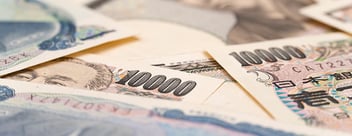As the second-most traded currency on the forex market and the second-most held reserve currency after the US dollaSr, the euro plays a major role in international trade. And while it may be shared by 19 countries, facilitating trade and investments among them, some countries in Central Europe have yet to adopt the single currency. Beyond contributing to bringing diversity to the foreign exchange market, we may wonder and why are they not using the euro? Let’s take a closer look at five of them: Bulgaria, the Czech Republic, Hungary, Poland and Romania.
The Bulgarian lev (BGN)
While Bulgaria expressed its strong commitment to meeting the convergence criteria and adopting the euro since it joined the European Union in 2007, it currently still uses its own currency, the lev (BGN). However, this may soon change.
Time in the waiting room
Along with Croatia, Bulgaria joined the Exchange Rate Mechanism II, the so-called “waiting room” for euro adoption, in 2020. Its currency has been pegged at a central rate of EUR/BGN 1.95583 to the euro and over the next few years the ECB will be carefully monitoring the currency’s moves. If all goes according to plan, Bulgaria could join as early as 2023 which would mark the Eurozone’s first enlargement since 2015, when Lithuania became the 19th country to adopt the euro.
Bulgaria’s 1997 financial crisis
After the fall of communism, Bulgaria experienced financial turmoil which led to a period of hyperinflation. Following several failed stabilisation attempts, the government introduced a currency board in 1997, pegging the value of the national currency against the German mark and all Bulgarian currency in circulation was backed by the Bulgarian National Bank. The currency board is still in force today and with the introduction of the euro, the lev became pegged to the euro at the exchange rate of the German mark to the euro when Germany adopted the single currency in 1999. In other terms, Bulgaria’s currency has been de facto bound to the monetary policy and interest rate decisions of the European Central Bank for the last 22 years.
|
Did you know? In old Bulgarian, the word “lev” meant “lion”.
|
The Czech koruna (CZK)
Like other countries in the region, the Czech Republic underwent a lot of economic and geopolitical changes in a short period of time. Its current currency, the koruna, was introduced in 1993 and derives its name from the currency that had been introduced in 1892 and used until the dissolution of the Austro-Hungarian Empire in 1918.
Staying strong despite the challenges
Under the Austro-Hungarian Empire, the Czech lands were at the heart of economic and industrial growth, producing most of the industrial goods in the empire. The region continued to enjoy considerable prosperity after the first World War when its currency was even considered the most stable in Europe. Occupation in the country, by Germany as early as 1938 and through the subsequent subordination by the Soviet Union, were detrimental to the local economy which experienced a relative decline.
Since its independence from the communist bloc, liberalisation and sound economic management have led to a stable exchange rate, low unemployment, low foreign debt and a shift of exports from the former Soviet Bloc to Western countries, with Germany at the top. Following the dissolution in 1993 of Czechoslovakia into two independent countries, the Czech Republic and Slovakia, the Czech koruna became fully convertible in 1995. By implementing strict fiscal policies, ensuring a stable banking sector and adopting a cautionary attitude, the Czech Republic was the first post-communist country to receive a credit rating by an international credit institution.
Sovereignty comes first
Just like in neighbouring Hungary and Poland, the general sentiment among the population of the Czech Republic is against changing the local currency to the euro. According to a poll conducted in 2019, as much as 75% of Czechs were opposed to adopting the euro and prefer to keep the control of their monetary policy.
|
Did you know? In 2019, the Czech Republic ranked as the 7th most complex economy according to the Economic Complexity Index (ECI), ahead of the United States and most Western European countries. |
The Hungarian forint (HUF)
Over the last centuries, Hungary has had several currencies including the pengő and the korona. Adopted in 1946, its current currency, the forint (HUF), was already the country’s currency from 1754 to 1892. Until 1994, Hungary had pegged the forint to a basket of currencies, including the US dollar and the deutsche mark. Today, it is a free-floating currency.
A step back in time
Hungary may have a backseat on the international stage today but let’s not forget its lengthy history and above all its golden age: the Austro-Hungarian Empire. Spanning over a thousand kilometres from the Czech Republic to the tip of Croatia and from Ukraine to the north of Italy, central Europe was partly governed from Budapest, making the city a major economic hub. At the time, the empire was the world’s third largest manufacturer and exporter, and it had the fourth largest machine building industry. The empire was considered a pioneer in science and technology, and generated high levels of trade, both domestically and internationally, thanks to its far-reaching network of railroads.
The collapse of the empire and its economic and monetary union at the end of World War I was a severe blow to the region. As new nations were created, borders were erected, and trade deals fell apart, dramatically hampering Hungary’s economic growth. But history has a tendency to repeat itself. The end of the second World War marked Hungary’s subjugation to the Soviet Union, uniting it once again, to some extent, to its neighboring countries.
As a result, Hungary’s recent history has reinforced a national sentiment of self-determination, that it shares with other Central European countries like the Czech Republic and Poland. To some Hungarians, the idea of joining an economic and monetary union and relinquishing control of the public purse reopens old wounds…
Exports above all
The country’s rich industrial past lives on today and it is still one of the leading nations for attracting foreign direct investment in Central Europe. Its export-oriented economy strongly emphasises on foreign trade and its main trading partners include all former Austro-Hungarian territories.
The Polish złoty (PNL)
While Poland accessed the European Union in 2004, it currently does not use the euro, and instead uses its own historic currency, the złoty (PNL). The Polish currency that we know today came into being in 1995 under the post-communist regime with the aim of boosting the country’s economy. The currency became convertible on international markets and the government pegged the złoty to the euro before eventually free floating the currency in 2000.
An economic success story
Poland’s economy is arguably a success story. Since the country left the communist bloc, its economy has been growing steadily every year and its GDP has increased seven-fold since 1990. In fact, even the economic downturn of 2008 did not significantly hamper its growth. With the fall of the communist regime, Poland dramatically shifted its economic strategy to the West. Today, over 70% of its exports go to European countries, and 30% alone go to neighbouring Germany, its main trading partner.
If its economy has steadily been improving since gaining its independence from the communist bloc, and if most of its trade is with European countries, why has Poland not yet joined the euro?
And then, the crisis happened
Its initial objective was to join the eurozone as early as 2012. Little did the country know the 2008 financial crisis was looming ahead. Economic statistics reported that the devaluation of its floating currency made Polish products more competitive to foreign buyers during the crisis. Considering the situation, the government decided to delay entry negotiations until the global crisis subsided. Since then, however, political shifts in the country are pulling Poland away from a consensus on the issue.
|
Did you know? According to a recent Ernst & Young report, Poland ranks among the top 10 most attractive investment destinations in Europe.Poland is yet to meet two convergence criteria: exchange rate stability and long-term interest rates including participating in the ERM II. As it currently stands, the złoty’s relative volatility offers a considerable scope for speculators to bet on and makes the constraints of ERM II that much harder to comply with. |
The Romanian leu (RON)
Romania joined the EU in 2007 along with its neighbour, Bulgaria. Yet just like Bulgaria, Romania is currently still using its national currency, the leu (RON). Today, Romania is working on meeting the convergence criteria and aims to adopt the euro by the end of the decade.
During its time as part of the Eastern bloc, Romania experienced rapid industrialisation, but the end of the communist period led to a sharp economic downturn and high inflation. Privatisation and strict austerity measures helped to stabilize the currency. Today, domestic demand is playing an important role in the economy. Foreign direct investment, which is above EU average as Romania is considered a country of significant economic potential, also has an important impact on the country's economy.
The country’s accession to the European Union and the Schengen area played a major role in developing and facilitating its trade at a European level. French-Romanian economic relations are particularly good and trade between the countries is well-balanced. In fact, France and fellow EU countries Germany, Italy and Hungary are among Romania’s top trade partners.
An unlikely investment destination
Some of the legacies of its Soviet period include a strong telecoms infrastructure and a trend towards an education system that focuses on science, technology, engineering, and mathematics. As a result, its tech industry has greatly benefitted from these advantages and is currently booming. Its IT-related areas of expertise include cybersecurity, enterprise software and fintech. Romania’s growing domestic market, young and diverse workforce, and EU membership make it a promising destination for tech investors.
Grasping the region’s dynamism
It may have taken some of these Central European countries a bit of time to find their footing, but today they are catching up fast. The economically dynamic region attracts businesses in euro-area countries and beyond looking to establish a local presence. In this regard, our checklist on how to successfully expand a business internationally can provide insight on how to best approach the issue.
The foreign exchange market on the West end of the old continent has simmered down since the introduction of the euro, but Central Europe represents a desirable destination for many expanding businesses. Present in Hungary, Bulgaria and Romania, local teams at iBanFirst can provide their expertise on how to best optimize cross-currency payments and import-export transactions.
Whether it concerns the Czech Republic’s highly complex economy, Romania’s flourishing IT sector, Hungary’s export-oriented economy, Poland and its rapidly growing domestic market or Bulgaria’s open and stable economy, our experts are there to best accompany you in your business opportunities.
Topics






